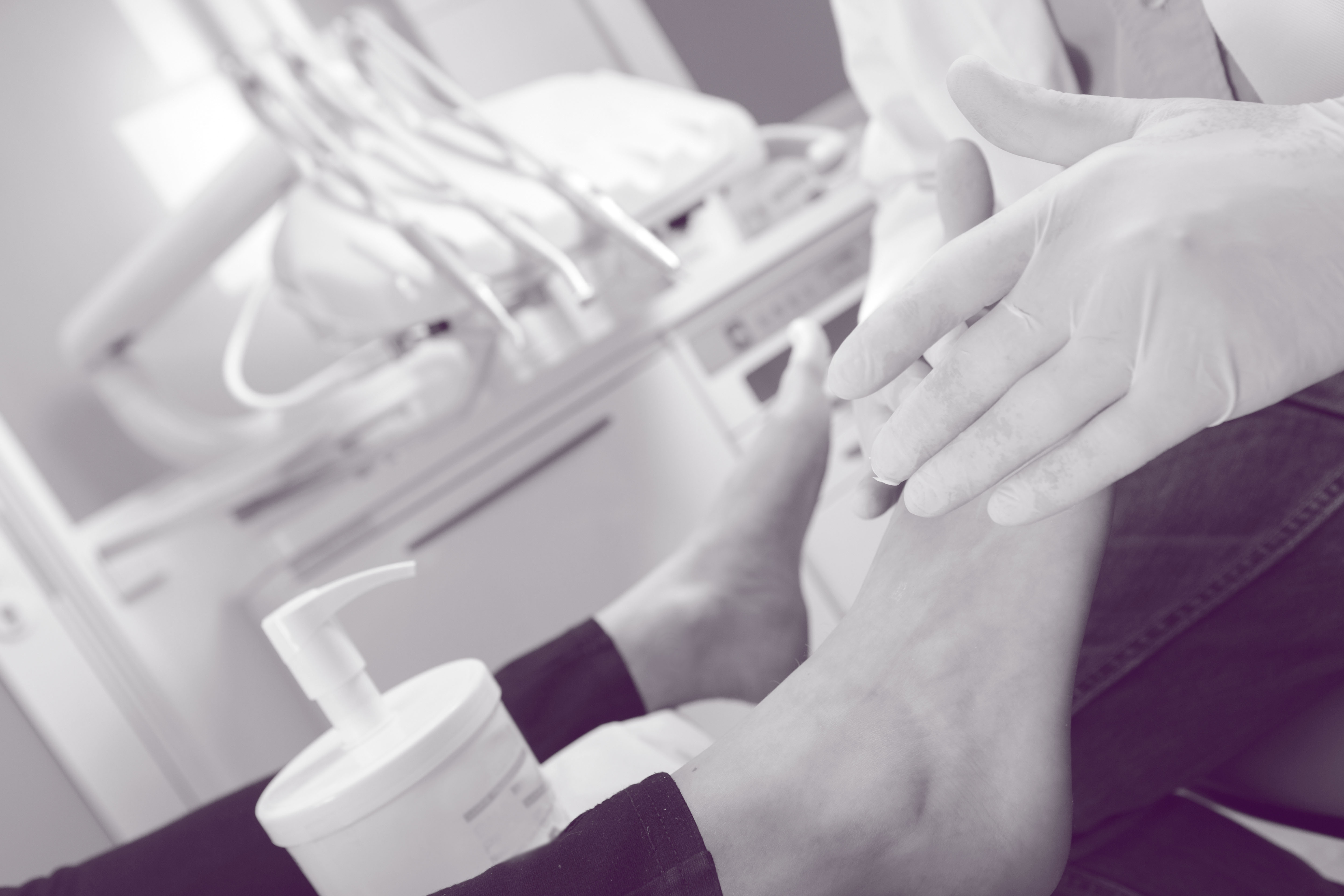
Referral for a multidisciplinary assessment in diabetic patients at high risk of limb amputation as a result of Charcot arthropathy.
Setting the Scene
In this case, the patient was a Type II diabetic and had a history of related complications including foot ulceration, neuropathy, peripheral vascular disease and renal failure.
The patient was admitted to hospital with diabetic foot ulceration, swelling and fever. An X-ray of the foot suggested evidence of irregularity of the base of the 5th metatarsal and inferior calcaneum. The patient’s foot swelling was not considered to be an issue by the vascular surgeon and a following doppler scan suggested no vascular intervention was deemed necessary. The patient was not referred to the diabetic Multidisciplinary team (MDT).
The patient was referred to the community podiatrist who, working in isolation, did not carry out any further investigations and was unable to convince the patient to offload the foot adequately. A month later a further X-ray was arranged which confirmed Charcot foot with joint subluxation. The patient continued to load the foot and was only informed 4 months later that a diagnosis of Charcot had been made. Further joint disorganisation had occurred requiring below knee amputation of the left leg.
Charcot arthropathy is a progressive condition associated with a diabetic neuropathic foot. Trivial trauma can lead to joint subluxation, pathological fracture and collapse of the foot. This can cause ulceration, subsequent sepsis and limb amputation. Early recognition via MRI and monitoring temperature differences between feet and complete immobilisation of the limb to reduce deformity is the mainstay of treatment. A degree of suspicion is required with any diabetic presenting with a warm swollen foot. X-ray in the early stages may be unremarkable and MRI is the investigation of choice for early detection.
NICE guidelines require that newly-admitted patients should be referred within 24 hours to a hospital MDT for management of a newly-diagnosed diabetic foot problem.
Main Learning Points
-
The podiatrist had noted the possibility of Charcot at the initial examination but didn’t appear to have mentioned this to the patient and did not refer for a multidisciplinary assessment.
-
An X-ray is not the best means of confirming Charcot. The patient should have had an MRI scan at an earlier stage.
-
By not referring the patient to the MDT (multidisciplinary team), the podiatrist was working outside their remit with this complicated case. By not adhering to the NICE guidelines and referring, the podiatrist was inappropriately managing a high-risk patient in isolation.
-
The NICE guidelines and the diabetic MDT would have advised immediate ‘offloading of the foot’ by using crutches or special shoes/boots which would support the damaged foot and made clear to the patient the risks of not using them.
- The patient chose not to always use the support boot and also undertook a long overseas flight which caused further damage, but the deformity and joint destruction had already occurred and there is no indication that he was advised of the severity of the condition.
Reducing the Risk of Litigation
By not referring to an MDT, undertaking the management of a high-risk patient solely and not discussing the condition with the patient, podiatrists put themselves at an enhanced risk of litigation.
TMLEP recommends the following:
- In high-risk diabetic patients, if there is any additional swelling in the feet/ankles, the possibility of Charcot arthropathy should always be considered.
- Referral to an MDT should occur within 24-hours, as per NICE guidelines in high-risk patients and an MRI, in addition to an X-ray, should be performed if there is a suggestion of Charcot’s for more precise diagnosis.
- Ultimately, it is the patient’s choice whether to heed the weight-bearing advice and use crutches and/or supportive boots, but it is imperative that they understand the severity of the diagnosis and the potential for amputation. Clinicians should do all they can to ensure the patient understands the situation fully.
In summary:
The podiatrist should have enlisted the help of the MDT foot clinic to treat this patient. An MRI should have been performed earlier to confirm the diagnosis. The clinicians should have ensured that the patient used their walker boot appropriately and that they understood fully the implications of not following the non-weight bearing advice and also advised against long-haul travel. The diagnosis and management were too little, too late. It is possible that better management of the condition might have avoided the need for amputation.